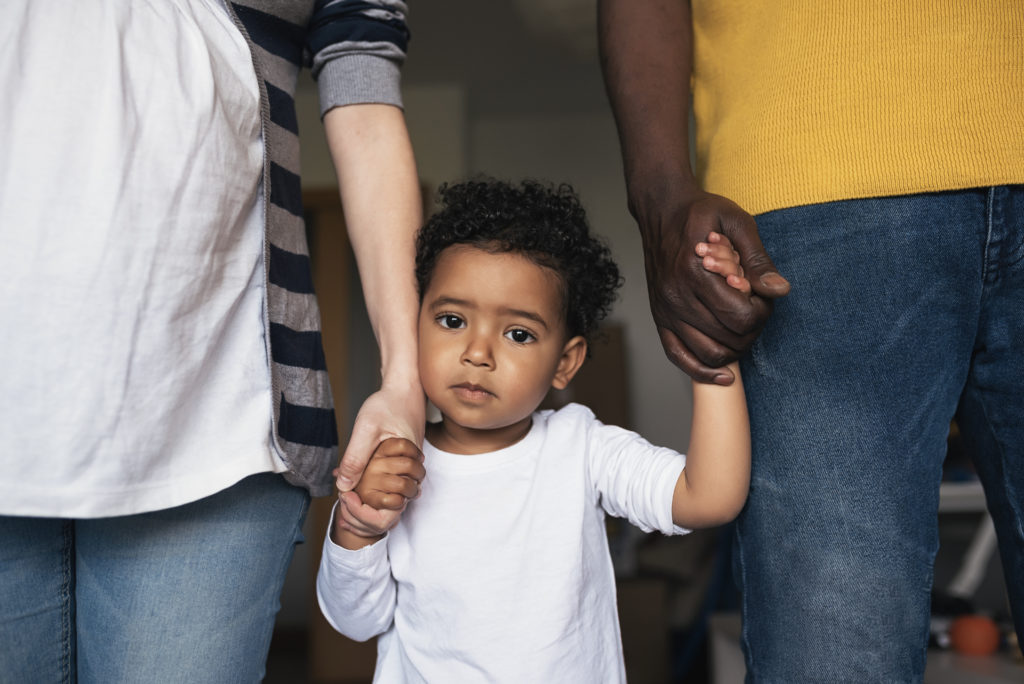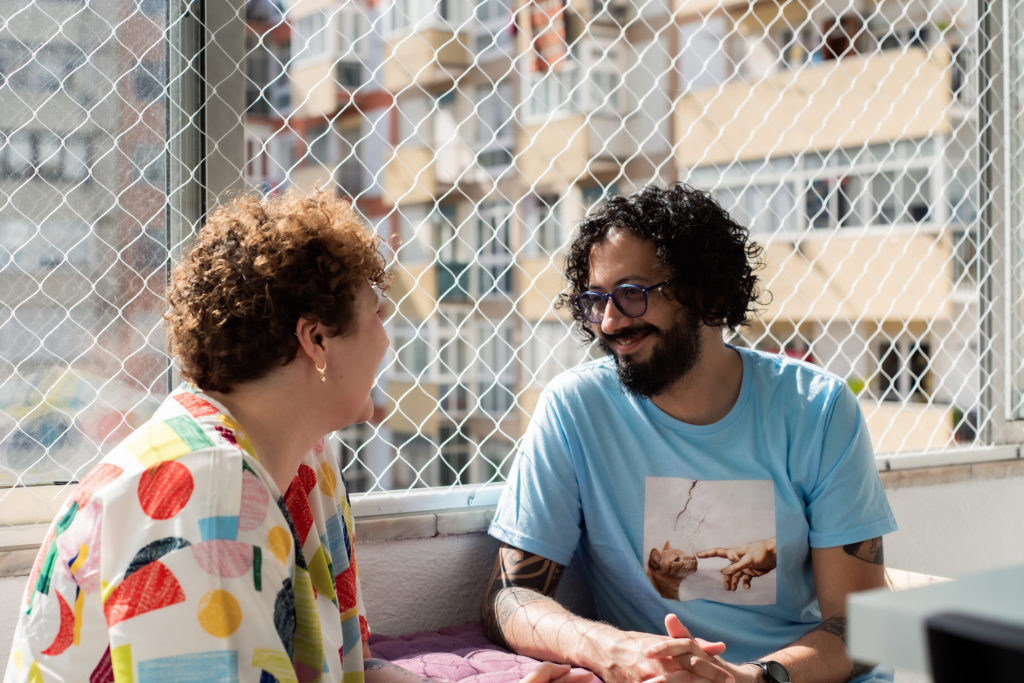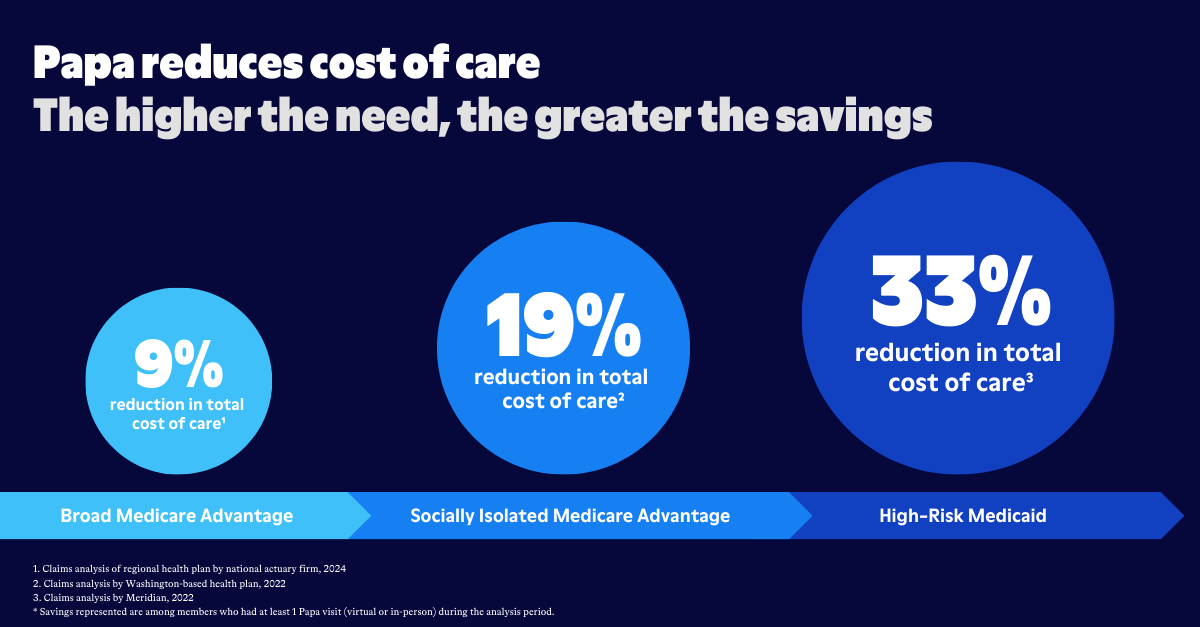How Thinking Outside the System Can Bring More People Inside

Health care just isn’t the same for everyone. Some people have easy access to great health care professionals. They live down the street from amazing top-notch hospitals, and have the money to afford any care they need.
Others don’t.
While disparities in health care can be caused by geography and finances, perhaps the most concerning disparities are those due to race and ethnicity. Historically, people of color have had higher rates of chronic disease and higher mortality rates than White people. Sadly, this hasn't changed. Data shows that right now, 33% of Black people over 65 have severe chronic illness and an additional 43% have moderate chronic conditions. Their White counterparts have 10% less severe illness and 7% less moderate illness.
Historical discrepancies in communities of color
Recent Papa research showed that Papa members who live in communities of color are 35% more likely to worry they won’t have enough food by the end of the month. They are also 200% more likely to have no one for social support and 200% more likely to be concerned about having the financial resources to pay for what they need. Finally, people who live in communities of color are 29% less likely to have a spouse to rely on for financial and health support.
These are big numbers that reveal a lot about our health care system.
There are many reasons health disparities like this exist, including that historically our society and the health care systems within it haven’t structured themselves in a way that allows people of color unbiased access to the health care resources that lead to holistic well-being.
Millions of people are negatively affected by historical disparities in health care—mentally, physically, and emotionally. As a result, in many communities of color, people have an understandable distrust of the health care system as a whole. This creates a cycle where people don’t utilize the very system that is supposed to help them, and then don’t get the help they need and deserve.
The COVID-19 pandemic has not only brought these disparities to light, it has often widened the inequality gap.
There is also an intersection between health care and other facets of life—home, family, work, religion, recreation, and friendships. Because of this, health inequity issues tend to impact entire communities. The inverse of this is that, by focusing on correcting systematic health disparities and ensuring that all people have access to the health care they need and deserve, millions of people can thrive and flourish.
Apprehension about health care

It is normal for any person to feel uncomfortable, stressed, or even scared when it comes to visiting the doctor about a health problem or going to the hospital for an emergency. This fear is often based in uncertainty, a fear of the unknown.
- How much will it cost?
- Can I afford it?
- Will it cause me pain and discomfort?
- What if I’m misdiagnosed?
- What if the doctor makes a mistake?
- What if I’m really sick?
- How will I make time for this appointment?
For many people of color, this fear has another layer rooted in lived experience. They, or someone they love, have experienced unfair and harmful treatment at the hands of health care professionals who were supposed to treat them with kindness and respect.
Perhaps their symptoms were shrugged off by a doctor, or their pain was undervalued. Maybe they shared something about their experience and a nurse didn’t believe them. Or maybe they felt unheard or misunderstood. Perhaps a doctor didn’t understand cultural differences or dismissed something that was important to them.
Because of this, people of color may be hesitant to seek the care they need. Data shows that about 65% of POC avoid going to the doctor because they are afraid they won't get quality care. Some members have even admitted that they would rather take their chances at home than risk being harmed by a visit. This creates a cycle of compounding fear and care gaps.
This cycle of fear and care gaps doesn’t have to be–in fact, there are several ways to re-engage people in minority communities and help them get the quality health care they need and deserve.
First, recognize, and acknowledge the equity gaps
To be a part of the solution, we must recognize that there’s a problem to begin with. Awareness is a key first step. We can’t fix a problem if we are unaware (or unwilling to acknowledge) that it exists.
People of color have historically received a lower quality of care than White people have. It’s clear in the data–and holds firm across populations. Everything from maternity care, to elder care, to pediatrics, to mental health care have demonstrated, data proven equity gaps.
If someone has never experienced discrimination or unfair treatment because of the color of their skin, it’s easy for them to assume that it doesn’t happen. But it does. Racial disparities in health care have been well-documented in the U.S. Some of the most well-known cases include the Tuskegee Syphilis Experiment, the cancer cells of Henrietta Lacks, and J. Marion Sims operating on Black women without anesthesia.
Unfortunately, these aren’t just isolated incidents from the past. The disparities continue today.
In March 2002, The Institute of Medicine (IOM) released a report titled: “What Healthcare Consumers Need to Know About Racial and Ethnic Disparities in Healthcare.”
Sadly, IOM released another report in 2010 titled: “How Far Have We Come in Reducing Health Disparities?” that detailed just how little progress had been made in the eight years since the first report. And countless other studies have been done in the past decade as well.
There have even been clear, obvious health care disparities associated with the COVID-19 pandemic. In Michigan, for example, 40% of COVID-related deaths have been African Americans, while only 14% of the population is made up of African Americans.
At Papa, health equity is one of our top priorities.
Papa Pals can promote health equity
Our mission at Papa is to provide companion care services and supplemental social support for the health care needs of all Americans. No matter where your members live, what they do, where they work, what language they speak, they deserve quality, compassionate health care. And no matter the color of their skin, their sexuality, their gender, their religion, or their ethnicity, they deserve equal treatment in our health care system.
At Papa, we want to improve member health—and the health of our country as a whole—one personal connection at a time. By sending highly qualified, compassionate Papa Pals to help people in the communities where your members live, work and learn.
One thing we do to start addressing disparities is ensure that our Papa Pals is that we meet members where they are most comfortable. We go into their communities and into their homes. We train our Papa Pals on how to develop trust and how to be a companion and advocate for our members. What’s more, our Papa Pals are diverse—in fact, our Papa Pals speak more than 27 languages and come from all different backgrounds and ethnicities.
We deeply value equality, inclusivity, and our members’ right to receive the very best care possible for every single one of our members. We’re happy to do our part to ensure they receive it.
After awareness comes action

There are a lot of things that each of us can do to make a difference. Each of us can be an advocate. Each of us can help to educate others. And each of us can work to reach an understanding of how others are feeling and how to help them.
Papa Pals are in a privileged and unique position to offer warmth, friendliness, and kindness. They can earn members’ trust and treat them with the utmost care and respect.
Then they can take meaningful action to help re-engage them in the system.
A trusted companion could ask people to share their experiences of discrimination in health care, if they feel comfortable doing that. They can listen without judgment and assure them that they are very much aware of the health care disparities for people of color. A friend can make a huge difference in raising awareness and creating solutions. They can say things like:
- You aren’t imagining things.
- So many others have experienced this too.
- I believe you.
- This wasn’t fair. It wasn’t right.
- We don’t have to accept it as the norm.
- We want better for you and for everyone.
- We want to do better.
- We want to be part of the change.
When people realize that they aren’t alone in their experience—and that their experience will be believed and validated—they’re often more willing to talk about it.
Once people start talking about their experiences and feelings, Papa Pals can work to reach a place of understanding. They can address concerns in a way that shows that they are dedicated not only to understanding, but to taking action.
Meaningful action is the only way to make change. Let’s talk about how we can take practical action steps that lead to equity.
How to take action for health equity
As our Papa Pals work to become advocates, they start by helping members engage (or re-engage in some cases) with their health care. Papa Pals can suggest questions they could ask the doctor to show that they are knowledgeable about their rights. Members can write these questions down and take them to their visit.
Papa Pals can gently encourage members to go for preventive screenings to detect a possible illness or disease early, before it’s too far along to treat effectively. They can walk them through what appointments generally involve, so members know what to expect. They can watch a YouTube video together that shows what to anticipate during exams. Papa Pals can take members to the doctor and even accompany them to whatever extent they feel comfortable and is appropriate and allowed.
Perhaps most importantly, Papa Pals can help reduce health inequity by earning trust and helping people to connect into the system. They can also address SDoH that disproportionately impact people of color, stopping them from getting the care that they need and deserve. They can also respectfully hold health care professionals accountable for providing members with the quality of care all patients deserve.
Making a difference for health equity
Ideally, quality health care is available and accessible to all people in equal measure. Unfortunately, this is not always how it plays out in real life. Race, ethnicity, and skin color can all play a role in some people having distinct and unfair disadvantages when it comes to getting care.
We can all be part of making things different!
By working together to make sure that every person—regardless of race, nationality, gender, sexuality or ethnicity—has access to the health care they need and deserve, we can each collaboratively take steps toward health care equity.
It will take each one of us fighting for what’s right in whatever way we can.



